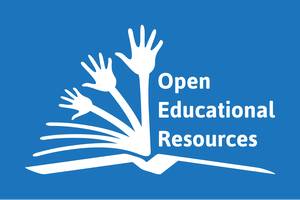 By Hannah Reynolds, Assistant Professor, Biological and Environmental Sciences
By Hannah Reynolds, Assistant Professor, Biological and Environmental Sciences
When I started teaching Microbiology, I tried to choose the cheapest textbooks for my students. These were well-produced books with quality text and figures, cheaper online additions, and online resources such as quizzes that would adapt to each student’s work. I used a textbook for Biology majors in the spring semester (Bio 216) and another one for nursing majors in the fall (Bio 215). I was surprised that, in both semesters, the textbook was the lowest rated aspect of both courses. Despite the relatively low cost and high production values, my students did not like what they were buying, so I decided to take a chance on OER.
I switched in Spring 2018 to using the OpenStax Microbiology textbook, supplementing with research articles. It reassured me to know that all of my students had equal access to the text from the first day of class. Test performance stayed the same as in previous semesters, which indicated that the switch had not harmed their education. I polled the students at the end of the semester, and they all reported being happy to have a free textbook. I found I preferred using the online book for consulting with the students, because I could easily pull up pages and figures in lecture, lab, or outside of class, without needing to log in.
There are two drawbacks of the particular text I am using. First, the level of detail and length of text varies among chapters and sections in a sometimes jarring way. This means a subtopic may span 10 pages or three paragraphs, based on what the author wanted to write. The writing style is simpler than some other books, and a few students described it as “dry.” Second, although the overall text depicts a diversity of medical staff and patients, this is not distributed evenly through the book. For example, the chapter on skin and eye conditions shows infections exclusively on light-toned skin.
My advice to anyone new to OER is to budget some time for additional image searches and to supplement with articles or additional open-source material. I recommend showing them the OER textbook during class so they can learn how to navigate chapters and search for terms. The textbook we use has self-check quizzes at the end of chapters, which I show them as well. Additionally, the books can sometimes give less detail than what some students need to understand the topic, so linking to videos or in-depth articles on a class website can help augment the material.
OER Image by Jonathasmello (Own work) [CC BY 3.0 (http://creativecommons.org/licenses/by/3.0)%5D, via Wikimedia Commons